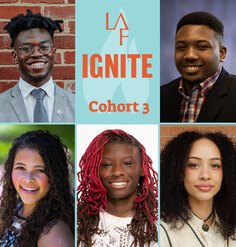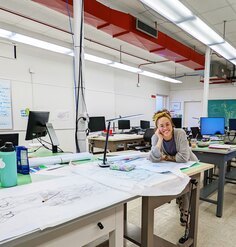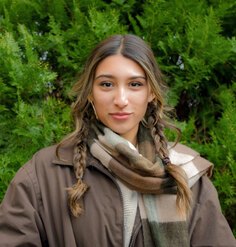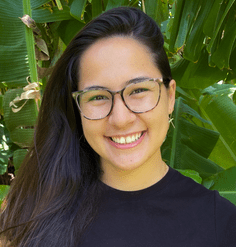Olmsted Scholar Feature: Transportation Discrimination and a Call to Change
By Dayton Crites, 2013 University Olmsted Scholar
In the last decade, the number of Americans choosing to pedal to work on a bicycle has risen by 61.6%. For a variety of reasons, our transportation options and desires are shifting. Yet as more Americans find reasons to abandon the car as their primary mode of transportation, they find themselves in a built environment that is ill-suited to their choice.
Take my town of Austin Texas, which is renowned for its progressive attitude and recent growth in bicycle and pedestrian-related infrastructure. Kudos to the city leaders for building a bicycle and pedestrian bridge spanning Lady Bird Lake and for significantly expanding the central bicycle network in recent years. Yet when one-third of all 2012 traffic fatalities within Austin city limits involve a pedestrian or cyclist, and pedestrian and cyclists form approximately 2% of Austin road users, the ability of our designs to protect anyone who isn’t driving a car seems fundamentally flawed.
Those that do not drive a car are not limited to the wild bicycle messenger and sweating triathlete riding through traffic — over 9% of American households do not even own a car. The official Landscape Architect Registration Examination (LARE) tests our ability as landscape architects to ensure the health, safety, and welfare of those who will occupy our designs. If that is the true test of a professional landscape architect, our profession must begin to do more than just put bicycle lanes and wide sidewalks in our sections, plans, and renderings. We need to protect all road users and provide them with a safe route to their destination.
Sometimes a bicycle lane or path isn’t enough. Austin’s 4th Street carries a separated pathway built west of and underneath I-35, Texas’ fourth most congested highway, which divides east from west Austin. As one approaches the highway, the two-lane pathway dissolves into a faded crosswalk generally ignored by three lanes of 55 mph traffic. The cars have no requirement to stop, and it is up to the cyclist or pedestrian to gauge their movement and dart across the road. The only safety warnings afforded these travelers is the yellow diamond sign emblazoned with a bicycle silhouette, similar to the protection afforded deer on mountain roads. The signs indicate to drivers that unfortunately, there are unpredictable creatures — be it deer or cyclists — crossing the road, and drivers should try to avoid hitting one.
As designers of the built world, we have a responsibility to our profession and the future inhabitants of our landscapes to design places that take into account the needs of all users and do not place convenience of vehicular transport over human health and safety. It is clear that providing equal access for all road users is a complex problem that is not easily solved, but it does not mean we should ignore it, or that it cannot be solved.
Before the advent of the macadam road base, not many people would have thought it feasible that nearly all populated corners of the globe would be connected through a stone-like and resilient web of roadways, allowing personal locomotion across thousands of miles of then-wilderness. It may seem far-fetched, but we can build a better transportation solution. From localized actions like lowering speed limits where pedestrians cross I-35 in Texas, to broad steps like lobbying and advocating for a more balanced transportation budget, we can build a better world, and we must.
Dayton Crites received his MLA from Utah State University in 2013 and now works for Design Workshop in Austin, Texas, where he enjoys a peaceful daily bicycle commute and a collaborative and dynamic office. Professionally, he is working to further Design Workshop’s Legacy Design® processes through advanced GIS analyses and context-sensitive designs.











